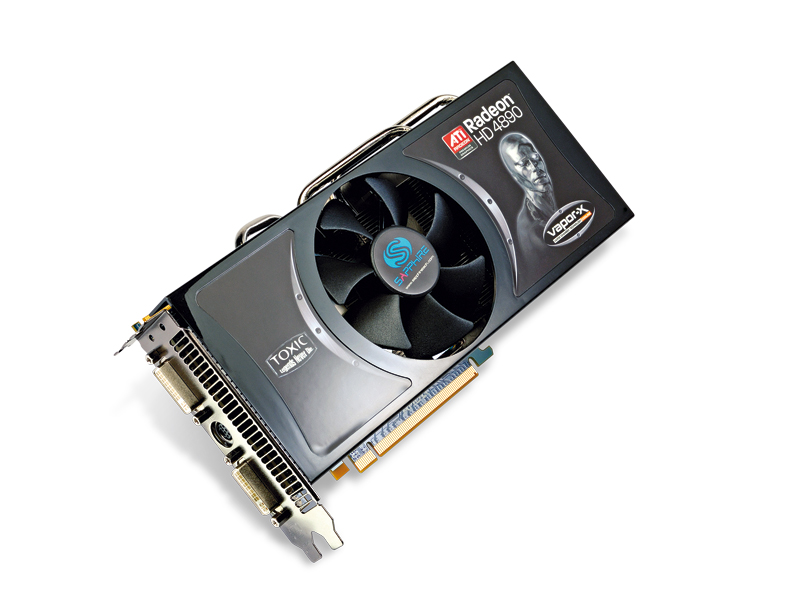TechRadar Verdict
A decent card, but still not quite good enough to compete with Nvidia's similar offerings
Pros
- +
Good performance
- +
Overclocking headroom
- +
Cool and quiet
Cons
- -
Still not a GTX 275 beater
Why you can trust TechRadar
Acouple of months back, we pitched the latest mid-range graphics cards head-to-head to see which came out on top. Nvidia won the battle by a hair's breadth, with its GTX275 pipping ATI's HD4890 to the number one spot.
But, as is often the way with graphics cards, manufacturers soon come up with cunning schemes to get them running that little bit faster, or differently. Sapphire has become something of an expert in this field, and its Vapor-X technology is actually very impressive.
Relying on the thermodynamics of evaporating liquid, Vapor-X allows the GPU core to run at far lower temperatures, and it requires less cooling, so there's far less noise from the fan. It's a proven technology, and we can't see why it hasn't been implemented in a CPU cooler yet.
- Also read: 15 best graphics cards in the world today
In turn, this means Sapphire's HD 4890 Toxic (it's not actually toxic as far as we know, unless you were to serve it as part of your Sunday roast) cores are jacked up a little higher than a standard HD 4890's, which results in slightly better benchmarks all round. We experienced small increases in all the games we tested over the standard 4890, apart from GRID, which dropped a little, weirdly.
They're impressive results, and it pushes the card far closer to Nvidia's GTX275, even beating it in some tests. The more efficient cooling means that the card can be overclocked a tad more than usual without it crashing. We pushed the core of this card to 1,000MHz and gained frames in everything we threw at it.
The card stayed stable throughout, and can undoubtedly be pushed further if you've got the balls. But, in spite of all Sapphire's advances in cooling and clocking, it's unfortunate that the chipset can't compete with Nvidia's. The fact is that, as we've highlighted before, Nvidia's cards come with all the CUDA gubbins for PhysX and HD video playback, which makes them a better proposition in the long run.
That's not to say the HD4890 Toxic is a bad card. Had this been the card we pitched against the GTX275 two moons back it would have been a closer competition. If you're such a massive fan of ATI that you wouldn't touch an Nvidia card with a barge pole (which may make installation slightly difficult), and want to overclock, the Toxic is pretty simply great.
For everyone else, the Nvidia option is still the best one. Until ATI come up with tech to match Nvidia's, which we're sure they will, the HD4890 Toxic feels like a wasted opportunity. Nice cooling, though.
Follow TechRadar reviews on Twitter: http://twitter.com/techradarreview

